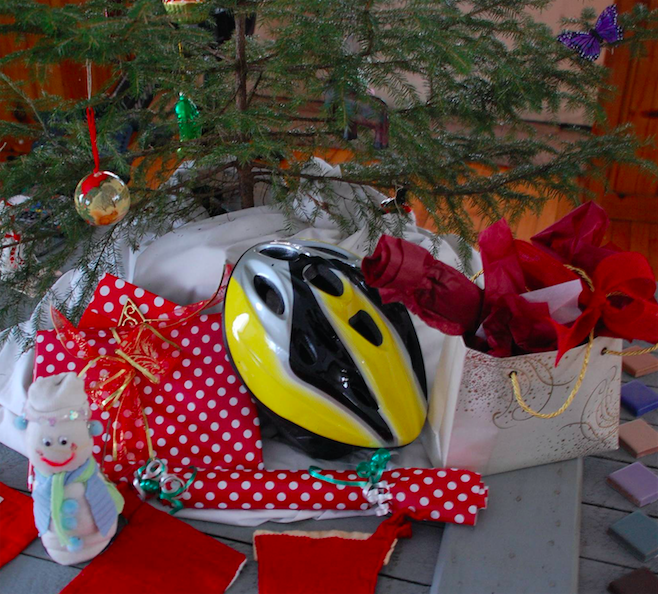The following letter to the editor was submitted by Beth Barnes, Community Outreach Specialist with North Country Hospital, and Safe Kids Vermont coalition member:
How to Have a Holly, Jolly and Safe Christmas
Unintentional injuries are the number one killer of kids in the United States according to Safe Kids Worldwide, an international non-profit dedicated to protecting kids and promoting injury prevention.
Every year approximately 8,000 families lose a child from a preventable injury, and millions more are injured, making this a global epidemic.
With the right information your family can hopefully enjoy a safe and memorable holiday season without incident or even a visit to the local emergency room. When preparing for the holidays at home or on-the-road, here are a few things to remember:
Distracted Drivers and Pedestrians
Drivers and pedestrians are prone to distraction so both must commit to keeping phones down while walking or driving. In 2014, 3,179 people were killed, and 431,000 were injured in motor vehicle crashes involving distracted drivers (distraction.gov).
Road conditions can be extremely challenging during the winter, even for experienced drivers, so parents of teens should remind them to be extra alert.
Special attention should be paid to shopping center parking lots where drivers and pedestrians may be distracted by children in the car, electronic devices or the general holiday rush.
In the Car
Buckle up on every ride and every time no matter how far, or near you are traveling.
If you are traveling with large groups each rider must have their own seat belt, car seat or booster seat. All child restraints should be age appropriate and properly installed to insure maximum protection.
Remember that even when kids have graduated from a booster seat, they should remain passengers in the back seat until they are 13.
On the Road—Expect the Unexpected
When traveling with kids even the best made plans can be interrupted by the all too familiar howls that mean a passenger is hungry, needs a bathroom break or a diaper change. When this happens don’t worry about making good travel time. Instead, get off at the next convenient exit and find a safe place to change, feed or relieve the kids. Do not pull over to the side of a busy road or interstate.
A fast and abrupt stop sometimes takes everyone by surprise. Keep hot foods, large gifts and anything that can become a dangerous projectile in the trunk of the car.
If the destination is a social gathering, be sure to designate a driver before arriving or have the phone number of a taxi or phone service programmed into your phone before starting to party.
In the Holiday Home
Decorate the tree with kids (and pets) in mind. Move ornaments that are breakable or have metal hooks toward the top of the tree leaving the lower branches available for softer, safer ornaments.
Anchor the tree in some way so it cannot fall over, especially on young children.
Take a look at all holiday lights, especially on the tree to ensure there are no frayed or exposed wires, loose connections or broken sockets or bulbs.
Water your tree regularly. Brittle and dry branches and needles can be flammable.
Keep holiday candles at least 12 inches away from anything that can burn and don’t forget to blow them out before going to bed or leaving the house.
Place all lighters and matches out of child’s reach and preferably out of their line of sight. Avoid any novelty lighters that resemble toys.
Some holiday plants can be poisonous so keep them out of reach of children and pets. A few poisonous holiday plants include mistletoe berries, the holly berry and Jerusalem cherry.
If you believe anyone, especially a child, has ingested something harmful call the Poison Control Center, 24/7 at 1-800-222-1222. Do not induce vomiting or administer any liquids until advised by the professionals at Poison Control.
Toys, Toys, Toys
When purchasing a toy for your child always choose an age appropriate one and this will be clearly indicated on the packaging. Read the warning labels and instructions before purchasing to ensure it will be a right fit for the right child.
Check to make sure there are no small parts or other potential choking hazards especially if younger siblings live in the home. Button batteries used in electronic toys, musical books and cards or other trinkets can cause serious damage to a child’s esophagus if swallowed. These batteries are small, shiny and attractive, especially to young children.
Did you give your child their dream bike, skateboard, scooter, hover board, hockey stick, horse, ATV, snow mobile, skis or snow board? Don’t forget the appropriate helmet for the appropriate sport. According to the Centers for Disease Control and Prevention, between 2006 and 2010 “more than half (55%) of Traumatic Brain Injuries among children 0-14 years were caused by falls.”
Let’s Get Cookin’
Kids love to reach! Prevent burns and scalds by using back burners and turning pot/pan handles away from the edge of the stove.
To prevent oven tip overs, do not place any food on an open oven door. Place all oven-baked items on a counter top out of the reach of young children and consider installing anti-tip anchor brackets on all appliances. Follow the manufacturer’s instructions to install and use anti-tip straps properly. TV/furniture/appliance tip overs, on average are responsible for killing one child in the US every two weeks.
Holidays are a great time to teach older kids how to cook safely. Teach them never to leave the kitchen while they’re using the stove or oven. Show them when to use protective oven mitts or potholders to remove hot food from the oven or stove top and teach them how to use a microwave.
Holidays are a time when we help our kids have fun, make memories and establish traditions.
Wishing all readers a happy, memorable and safe holiday season that does not include a trip to the Emergency Department!

